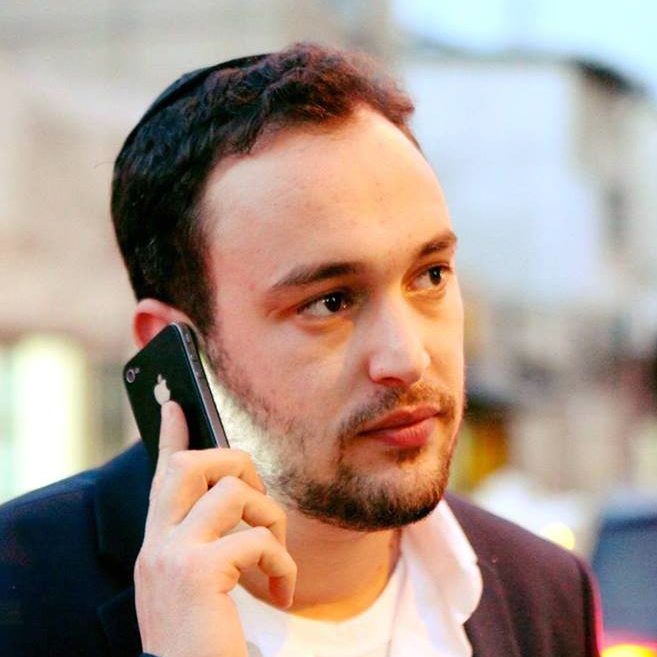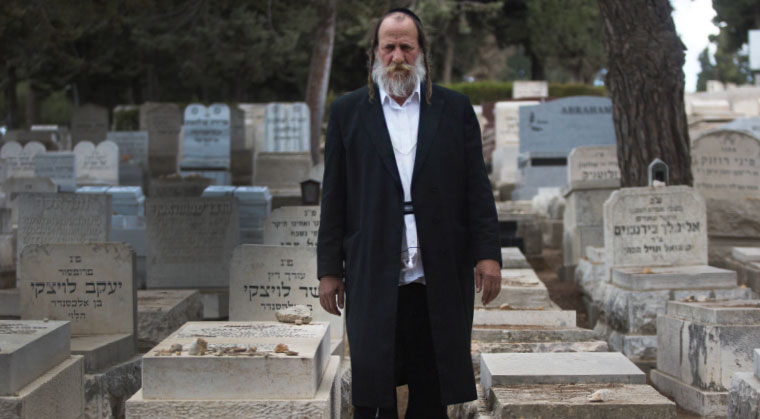Secrets from the Grave

Rabbi Herschel Groman of Jerusalem’s Perushim chevra
kaddisha has seen it all. But once a year, on the 7th of Adar,
he lets that tough curtain slide

Rabbi Herschel Groman isn’t a man who shows emotion easily. After close to 40 years of work with the Jerusalem Perushim community’s chevra kaddisha, which for generations has tended to members of the Old Yishuv, he’s widely considered an international authority on burial in Jerusalem. Every time someone crosses over from the Old Yishuv to the Next World, Groman is at the funeral, whether it’s for a simple, nondescript denizen or an internationally known gadol b’Yisrael.
“Today, people like to talk about the emotional aspect of their jobs. When I started out, though, no one talked about their feelings,” he says in his deep, gravelly voice. “We saw it in simple terms: HaKadosh Baruch Hu sends a person down to this world to complete a mission. Everyone has to fulfill his own tafkid the best way he can. At some point, the mission is over.
“I’m not against relating to emotions,” he clarifies. “Maybe it’s a good thing to talk about your feelings. But I don’t know of anyone in the chevra kaddisha who needed psychological help because of the job. At the end of the day, we know we’re doing holy work. Every week we have a shiur in hilchos kevurah. We go over all the halachos and minhagim again and again, and we bear in mind every day that we’re dealing with a sacred mission”
Herschel Groman is an authentic Yerushalmi — a term that carries more cultural than geographical weight, although it is certainly rooted in the courtyards of the Old Yishuv. It comes with a distinctive garb and speech, but mainly, it’s a mindset. When he hears my description of him, he laughs. He’s never seen the need for labels. Maybe it’s because in his occupation, all distinctions fall away, cultural or otherwise.
He tells me at the outset that nothing shakes him, he’s “seen it all.” Nevertheless, I probe. Surely there’s been a funeral that sticks in his memory, one that was perhaps tougher than others?
He buries his head in his hands for a moment, then takes a long drag from his cigarette. “Well, the levayah of the Fogel family was hard.”
After a pause, I press for more details.
“I don’t know if there’s anything to tell. The levayah was on Zayin Adar, the day that the members of the chevra kaddisha customarily fast.” Chevra kaddisha members observe a minhag to fast on that day to atone for any lack of respect they may have shown a niftar. “We buried them here, on Har Hamenuchos. I suppose you have to be a certain kind of person not to be affected by exposure to the dead, day and night — but still, you can’t cut yourself off completely from what goes on around you.
“That Motzaei Shabbos I heard about the terrible massacre that took place in Itamar. Five murdered, in their home, Rachmana litzlan. After they were brought here, following the taharah and everything, we had to take the niftarim and place them into the graves. There’s a difference between a Yid who dies a natural death after 90 years of life, and a little child who was slaughtered in his own house, on Leil Shabbos. It’s horrific.
“After that kind of levayah, you go home with a heavy feeling in your heart. You don’t have time to process it, though, because before you know it, there’s another levayah. You have to do it all over again.”
That, it seems, is the essence of his story. Even after the most shattering moments imaginable, he has no time to process the enormity of what’s transpired. There will be another levayah, and then another one; Groman’s work won’t be done until the final redemption. Until that day, the specter of death is just his daily routine.
Oops! We could not locate your form.






